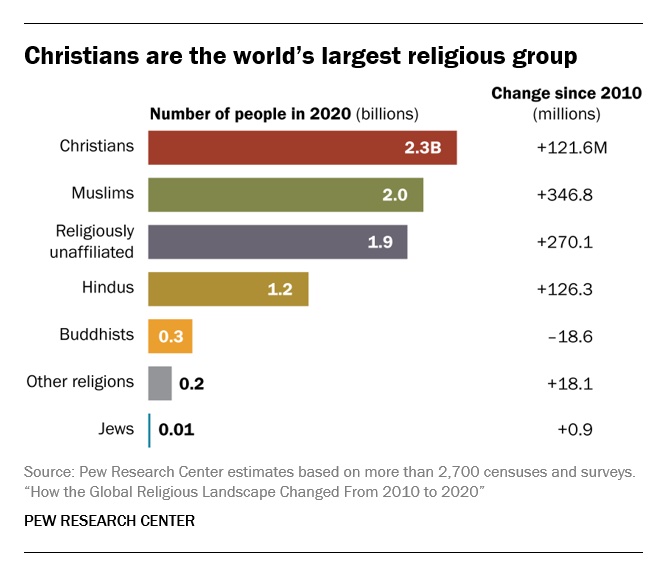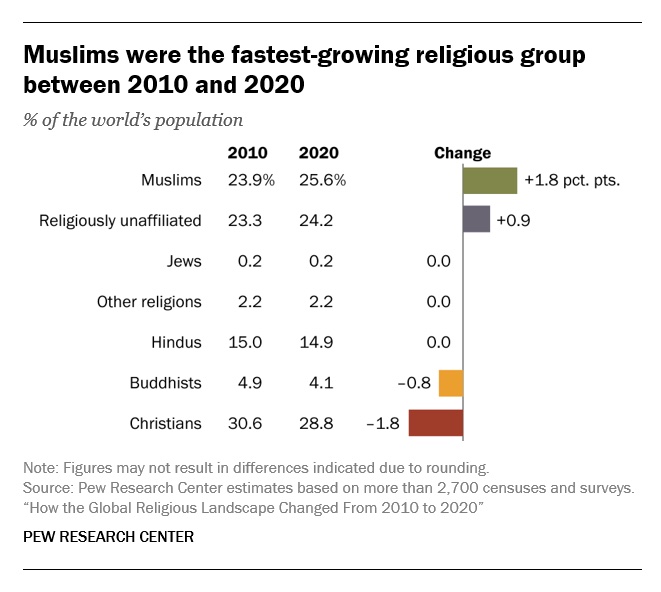Uncategorized
Standing on Albania’s Jew Street, I learned firsthand the country’s lifesaving culture of hospitality
BERAT, Albania (JTA) — Stone paths wind through the Ottoman-style houses built into the hillside of Berat, Albania. They lead to an imposing 13th-century castle at the peak — the top priority for most visitors to this 60,000-person town 90 minutes south of the capital, Tirana. I had other plans.
Albanians take pride in their ancient code of “besa,” which translates to “keep the promise” and leads them to prioritize guests and religion in their homes. For Albanian Jews or those who fled there from elsewhere in the Balkan Peninsula as German forces advanced during World War II, it promised safe harbor with Albanian families and even throughout entire towns. Albania is the only country in Europe whose Jewish population grew during the war.
Berat’s Solomoni Museum explains this history and that of earlier Jews in the area. At least, so I hear: Under the stone arches off the plaza, I found only locked doors.
Some people collect souvenir spoons or Starbucks city mugs when they travel, others collect memories. I collect fragments of Jewish identity. Planning this trip to Albania with friends, I insisted on a stop in Berat to see the small museum and wasn’t about to give up.
“I’ll call her,” offered the woman behind the desk at the Ethnographic Museum across the street. “Her” referred to the caretaker, the widow of the Orthodox Christian professor who started the museum — Albania’s only one dedicated to Jewish history — as a passion project funded by his pension. After Simon Vrusho’s death in 2019, the museum closed until a French-Albanian businessman heard the story and donated funds for it to reopen in a larger, permanent location.
But the call ended with bad news: The caretaker was sick, and the museum would remain closed. I grimaced. Seeing my reaction, the Ethnographic Museum docent did what all Albanians do — anything she could to make me feel better, to make sure I enjoyed my stay in her town. In this moment, that meant explaining everything she knew about Jews in Albania.
A view of the exterior of the Solomoni Museum, the country’s only museum about its Jewish history. (Naomi Tomky)
Jews first arrived in the country as Roman captives, almost 2,000 years ago. But the first major wave, especially to Berat, came from Spanish Jews fleeing the Inquisition. The Ottoman Empire, which ruled the area at the time, offered nominal religious freedom.
This month, the country’s prime minister announced plans to open a museum in Tirana dedicated to the stories of Albanian citizens who sheltered Jews during the Holocaust, when the country was occupied by both fascist Italy and later Nazi Germany. Yad Vashem, Israel’s Holocaust remembrance authority, has recognized at least 75 Albanians as Righteous Among the Nations for saving Jews.
“You can see the street where the Jews lived,” the docent noted. I perked up and jotted down her directions.
Six blocks away, I found a simple black plaque with white lettering, barely the size of my forearm and posted high on a white brick wall. It read, “Rruga Hebrentje.” I stared at it. Two millennia of Jewish history in the country, and one closed museum forced me to take heart in a little sign saying “Jew Street.”
A sign in Berat, Albania, reads Rruga Hebrentje, or Jew Street. (Naomi Tomky)
Jews have company in this razing of history: The brutal post-World War II communist regime of dictator Enver Hoxha shuttered all religious institutions in 1967, declaring Albania the world’s first atheist state. His forces destroyed more than 2,000 mosques, churches and other sacred buildings, arresting priests, clerics and imams, many of whom disappeared forever into labor camps and hidden graves. “Religion is the opium of the people,” Hoxha wrote, quoting Karl Marx.
It felt selfish to pout about the lack of Jewish history when so much religion, so many people and huge swaths of Albanian culture had been so recently and violently erased. I joined my friends to explore Berat’s exceptions to the wanton destruction, starting at the Sultan’s Mosque, which dates to the 15th century and boasts an intricately carved wooden ceiling. We expected to admire just the outside, since our guidebook said the doors opened only around Friday prayer.
But as we stared at the somewhat ordinary façade, a friendly gentleman chatted us up. He spoke Albanian, Greek and a bit of Italian, the last of which proved useful at matching up to our Spanish and French. He told us a little about the mosque and the casual styles of observance by most Albanian Muslims, but we only realized he worked there when he invited us inside, retrieving a key when we responded with excitement.
We marveled at the green, red and gold ceiling, illuminated by a round chandelier. He asked if we wanted to climb up the minaret, warning us about the ascent. Narrower than the width of my hips, the tightly coiled spiral of 94 stairs featured a layer of dust and cobwebs that stuck to our bare feet. But at the top, swallowing my fear of heights, confined spaces and bugs, I reaped the reward: a 360-degree view of the “thousand windows” that give the town its nickname, flanking both banks of the Osumi River, and the double eagle of Albania’s red flag flying proudly above it all from the castle.
A view of the ceiling inside the Sultans Mosque in Berat. (Naomi Tomky)
Back on the ground, we thanked the man profusely and dropped donations in the box outside the mosque door as we prepared to say goodbye. Instead, he led us across the square to another building – the Halveti Tekke, or Teqe. Light flowed through the high stained-glass windows onto the walls of the 700-year-old gathering place belonging to the mystic order of Sufi Muslims called Bektashi. Chains hung from the ornate gold-leaf-decorated ceiling over a space where, according to our new friend, the bektashi, or dervishes, used to perform their whirling rituals.
“You want to go up?” he asked my friend’s eight-year-old daughter. She nodded excitedly, and he tossed her a ring of keys, pointing the way to the balcony. As she climbed the stairs, I noticed a pair of six-pointed stars framing the main doorway, a reminder of my original mission, even if they were likely not Stars of David.
But if I felt sad about missing out on the Jewish museum, I was heartened by what I did receive: a first-hand lesson on Albania’s life-saving culture of hospitality.
—
The post Standing on Albania’s Jew Street, I learned firsthand the country’s lifesaving culture of hospitality appeared first on Jewish Telegraphic Agency.
Uncategorized
How the Global Religious Landscape Changed from 2010 to 2020

Muslims grew fastest; Christians lagged behind global population increase
• Christians are the world’s largest religious group, at 28.8% of the global population. They are a majority everywhere except the Asia-Pacific and Middle East-North Africa regions. Sub-Saharan Africa has surpassed Europe in having the largest number of Christians. But Christians are shrinking as a share of the global population, as millions of Christians “switch” out of religion to become religiously unaffiliated.

• Muslims are the world’s second-largest religious group (25.6% of the world’s population) and the fastest-growing major religion, largely due to Muslims’ relatively young age structure and high fertility rate. They make up the vast majority of the population in the Middle East-North Africa region. In all other regions, Muslims are a religious minority, including in the Asia-Pacific region (which is home to the greatest number of Muslims).

• The religiously unaffiliated population is the world’s third-largest religious category (24.2% of the global population), after Christians and Muslims. Between 2010 and 2020, religiously unaffiliated people grew more than any group except Muslims, despite their demographic disadvantages of an older age structure and relatively low fertility. The unaffiliated made up a majority of the population in 10 countries and territories in 2020, up from seven a decade earlier.
• Hindus are the fourth-largest religious category (14.9% of the world’s population), after Christians, Muslims and religiously unaffiliated people. Most (99%) live in the Asia-Pacific region; 95% of all Hindus live in India alone. Between 2010 and 2020, Hindus remained a stable share of the world’s population because their fertility resembles the global average, and surveys indicate that switching out of or into Hinduism is rare.
• Buddhists (4.1% of the world’s population) are the only group in this report whose number declined worldwide between 2010 and 2020. This was due both to religious disaffiliation among Buddhists in East Asia and to a relatively low birth rate among Buddhists, who tend to live in countries with older populations. Most of the world’s Buddhists (98%) reside in the Asia-Pacific region, the birthplace of Buddhism.
• Jews, the smallest religious group analyzed separately in this report (0.2% of the world’s population), lagged behind global population growth between 2010 and 2020 – despite having fertility rates on par with the global average – due to their older age structure. Most Jews live either in North America (primarily in the United States) or in the Middle East-North Africa region (almost exclusively in Israel).
These are among the key findings of a Pew Research Center analysis of more than 2,700 censuses and surveys, including census data releases that were delayed due to the coronavirus pandemic. This report is part of the Pew-Templeton Global Religious Futures project, which analyzes global religious change and its impact on societies around the world. Funding for the Global Religious Futures project comes from The Pew Charitable Trusts and the John Templeton Foundation.
Uncategorized
Antisemitism in some unlikely places in America

By HENRY SREBRNIK Antisemitism flourishes in a place where few might expect to confront it – medical schools and among doctors. It affects Jews, I think, more emotionally than Judeophobia in other fields.
Medicine has long been a Jewish profession with a history going back centuries. We all know the jokes about “my son – now also my daughter – the doctor.” Physicians take the Hippocratic Oath to heal the sick, regardless of their ethnicity or religion. When we are ill doctors often become the people who save us from debilitating illness and even death. So this is all the more shocking.
Yes, in earlier periods there were medical schools with quotas and hospitals who refused or limited the number of Jews they allowed to be affiliated with them. It’s why we built Jewish hospitals and practices. And of course, we all shudder at the history of Nazi doctors and euthanasia in Germany and in the concentration camps of Europe. But all this – so we thought – was a thing of a dark past. Yet now it has made a comeback, along with many other horrors we assume might never reappear.
Since the Hamas attack on Israel on October 7, 2023, there has been a resurgence of antisemitism, also noticeable in the world of healthcare. This is not just a Canadian issue. Two articles on the Jewish website Tablet, published Nov. 21, 2023, and May 18, 2025, spoke to this problem in American medicine as well, referencing a study by Ian Kingsbury and Jay P. Greene of Do No Harm, a health care advocacy group, based on data amassed by the organization Stop Antisemitism. They identified a wave of open Jew-hatred by medical professionals, medical schools, and professional associations, often driven by foreign-trained doctors importing the Jew-hatred of their native countries, suggesting “that a field entrusted with healing is becoming a licensed purveyor of hatred.”
Activists from Doctors Against Genocide, American Palestinian Women’s Association, and CODEPINK held a demonstration calling for an immediate cease-fire in Gaza at the Hart Senate Office Building in Washington, D.C., Nov. 16, 2023, almost as soon as the war began. A doctor in Tampa took to social media to post a Palestinian flag with the caption “about time!!!” The medical director of a cancer centre in Dearborn, Michigan, posted on social media: “What a beautiful morning. What a beautiful day.” Even in New York, a physician commented on Instagram that “Zionist settlers” got “a taste of their own medicine.” A Boston-based dentist was filmed ripping down posters of Israeli victims and a professor at the University of Pennsylvania Perelman School of Medicine did the same. Almost three-quarters of American medical associations felt the need to speak out on the war in Ukraine but almost three-quarters had nothing to say about the war in Israel.
Antisemitism in academic medical centres is fostering noxious environments which deprive Jewish healthcare professionals of their civil right to work in spaces free from discrimination and hate, according to a study by the Data & Analytics Department of StandWithUs, an international, non-partisan education organization that supports Israel and fights antisemitism.
“Academia today is increasingly cultivating an environment which is hostile to Jews, as well as members of other religious and ethnic groups,” StandWithUs director of data and analytics, and study co-author, Alexandra Fishman, said on May 5 in a press release. “Academic institutions should be upholding the integrity of scholarship, prioritizing civil discourse, rather than allowing bias or personal agendas to guide academic culture.”
The study, “Antisemitism in American Healthcare: The Role of Workplace Environment,” included survey data showing that 62.8 per cent of Jewish healthcare professionals employed by campus-based medical centres reported experiencing antisemitism, a far higher rate than those working in private practice and community hospitals. Fueling the rise in hate, it added, were repeated failures of DEI (diversity, equity, and inclusion) initiatives to educate workers about antisemitism, increasing, the report said, the likelihood of antisemitic activity.
“When administrators and colleagues understand what antisemitism looks like, it clearly correlates with less antisemitism in the workplace,” co-author and Yeshiva University professor Dr. Charles Auerbach reported. “Recognition is a powerful tool — institutions that foster awareness create safer, more inclusive environments for everyone.”
Last December, the Data & Analytics Department also published a study which found that nearly 40 per cent of Jewish American health-care professionals have encountered antisemitism in the workplace, either as witnesses or victims. The study included a survey of 645 Jewish health workers, a substantial number of whom said they were subject to “social and professional isolation.” The problem left more than one quarter of the survey cohort, 26.4 per cent, “feeling unsafe or threatened.”
The official journal of the Alliance for Academic Internal Medicine concurs. According to “The Moral Imperative of Countering Antisemitism in US Medicine – A Way Forward,” by Hedy S. Wald and Steven Roth, published in the October 2024 issue of the American Journal of Medicine, increased antisemitism in the United States has created a hostile learning and practice environment in medical settings. This includes instances of antisemitic behaviour and the use of antisemitic symbols at medical school commencements.
Examples of its impact upon medicine include medical students’ social media postings claiming that Jews wield disproportionate power, antisemitic slogans at the University of California, Los Angeles (UCLA) David Geffen School of Medicine, antisemitic graffiti at the University of California, San Francisco (UCSF) Cancer Centre, Jewish medical students’ exposure to demonization of Israel diatribes and rationalizing terrorism; and faculty, including a professor of medicine at UCSF, posting antisemitic tropes and derogatory comments about Jewish health care professionals. Jewish medical students’ fears of retribution, should they speak out, have been reported. “Our recent unpublished survey of Jewish physicians and trainees demonstrated a twofold increase from 40% to 88% for those who experienced antisemitism prior to vs after October 7,” they stated.
In some schools, Jewish faculty are speaking out. In February, the Jewish Faculty Resilience Group at UCLA accused the institution in an open letter of “ignoring” antisemitism at the School of Medicine, charging that its indifference to the matter “continues to encourage more antisemitism.” It added that discrimination at the medical school has caused demonstrable harm to Jewish students and faculty. Student clubs, it said, are denied recognition for arbitrary reasons; Jewish faculty whose ethnic backgrounds were previously unknown are purged from the payrolls upon being identified as Jews; and anyone who refuses to participate in anti-Zionist events is “intimidated” and pressured.
Given these findings, many American physicians are worried not only as Jewish doctors and professionals, but for Jewish patients who are more than ever concerned with whom they’re meeting. Can we really conceive of a future where you’re not sure if “the doctor will hate you now?”
Henry Srebrnik is a professor of political science at the University of Prince Edward Island.
Uncategorized
The 2025 Toronto Walk (and talk ) for Israel

By GERRY POSNER There are walks and then there are walks. The Toronto UJA Walk for Israel on May 25, 2025 was one of a kind, at least as far as Canada and Jews are concerned. The number of people present was estimated to be 56,000 people or 112,000 total shoes. (How they get to that number is bewildering to me, since there is no one counting). This was 6,000 more than last year. Whether it is true or not, take it from me, it was packed. The synagogues in Canada should be so fortunate to get those numbers in total on High Holidays. The picture here gives you a sense of the size of the crowd.

This was my first walk in Toronto for Israel and I was with my granddaughter, Samantha Pyzer (not to forget her two friends whom she managed to meet at the site, no small feat, even with iPhones as aids). The official proceedings began at 9:00 a.m. and the walk at 10:00 a.m. There was entertainment to begin with, also along the way, and at the finish as well. The finish line this year was the Prosserman Centre or the JCC as it often called. The walk itself was perhaps 4 kilometres – not very long, but the walking was slow, especially at the beginning. There were lots of strollers, even baby carriages, though I did not see any wheelchairs. All ages participated on this walk. I figured, based on what I could see on the faces of people all around me that, although I was not the oldest one on the walk, I bet I made the top 100 – more likely the top 20.
What was a highlight for me was the number of Winnipeggers I met, both past and present. Connecting with them seemed to be much like a fluke. No doubt, I missed la lot of them, but I saw, in no particular order (I could not recall the order if my life depended on it): Alta Sigesmund, (who was, a long time ago, my daughter Amira’s teacher), Marni Samphir, Karla Berbrayer and her husband Dr. Allan Kraut and family. Then, when Samantha and I made it to the end and sat down to eat, I struck up a conversation with a woman unknown to me and as we chatted, she confirmed her former Winnipeg status as a sister-in- law to David Devere, as in Betty Shwemer, the sister of Cecile Devere. I also chanced upon Terri Cherniack, only because I paused for a moment and she spotted me. As we closed in near the finish, I met ( hey were on their way back), Earl and Suzanne Golden and son Matthew, as well as Daniel Glazerman. That stop caused me to lose my granddaughter and her pals. Try finding them amid the noise and size of the crowd – but I pulled it off.

As I was in line to get food, I started chatting with a guy in the vicinity of my age. I dropped the Winnipeg link and the floodgates opened with “ Did I know Jack and Joanie Rusen?” So that was an interesting few minutes. And I was not too terribly surprised to come across some of my Pickleball family. All of these meetings, along with spotting some of my sister’s family and other cousins, were carried on with the sound of the shofar as we moved along the way. In short, this was a happening. Merchants selling a variety of products, many of them Israeli based, were in evidence and, of course, the day could not have ended without the laying of tefillin, aided by Chabad, who have perfected the procedure to take less than a minute. See the photo. Chabad had a willing audience.
Aside from the joy of sharing this experience with my granddaughter, the very presence of all these Jews gathered together for a common reason made this day very special to me. However, there was a downside to the day. The downside was that, as we began to walk back to our car there was no other way I could figure out how to return when the rains came and came. While we walked faster, we were impeded by pouring rain and puddles. But Samantha wanted to persevere, as did I. We made it, but were drenched. My runners are still drying out as I write this two days later.
What with being surrounded by 56,000 people, the noise, the slow walking, and the rain, I can still say the day was a real highlight for me – one of the better moments since our arrival in Toronto in 2012. As well as the photos we took along the way, I have the reminder of the day, courtesy of the UJA, as evidenced from the photo. It was not just the walk, but the talk that accompanied the walk that made it so worthwhile for me. I would do it again, minus the rain.
